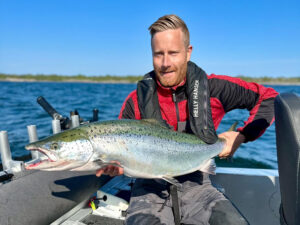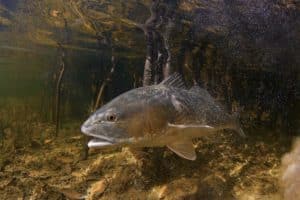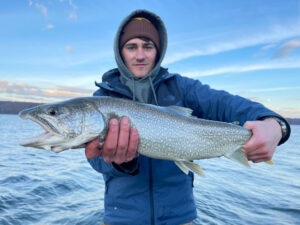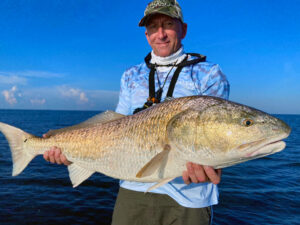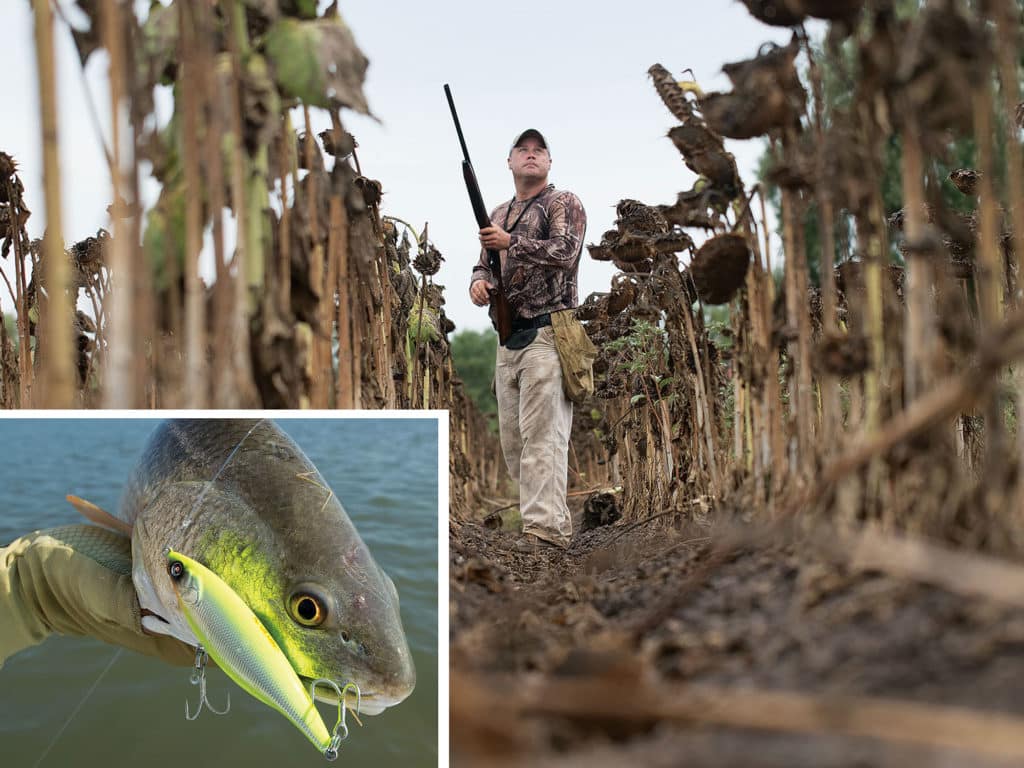
As we drove toward a vast sunflower field near the Texas/Mexico border, raft after raft of doves lifted from the nearby trees — a black mass of wings. “Whoa,” I murmured; the five of us hunters gaped. We had just spent a sunny September morning casting Sebile plugs to hungry redfish and trout in the salty shallows of the Lower Laguna Madre. We experimented with Penn’s new Slammer III spinning reels as we visually scoured the arid horizon for signs of south Texas’ signature exotic antelope, the nilgai.
Clearly we had come to an unusual place. And what we were about to experience on the dove field just might morph into a lasting impression, particularly for me. That’s because I love wing shooting, and I prefer warm weather. So what could be better than fishing a pleasant sunrise in the morning, and then hunting in shorts that afternoon?
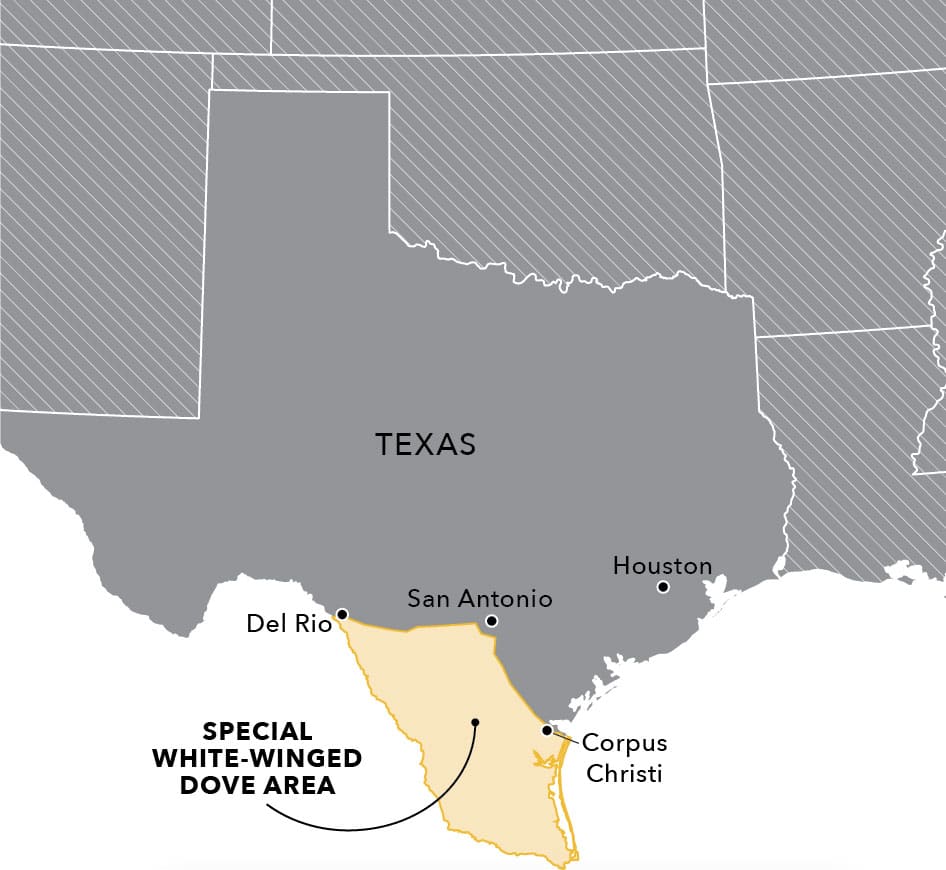
Game Plan
South Texas offers this late-summer opportunity when the special white-winged dove season opens for hunters in 27 counties, usually during the first weekend in September. That timing also coincides with some prime fishing offshore of Brownsville and in the famous shallow 50-mile-long bay that comprises the Lower Laguna Madre.
Our host, outfitter LeeRoy Gonzales, tailored for us a three-and-a-half-day — Friday through Monday morning — cast-and-blast experience out of Harlingen, Texas. Our group included Penn brand manager Mike Rice, SF publisher Dave Morel, marine biologist (and the author’s spouse) Spud Woodward, a representative from Benelli firearms, Chad Rhea, and one from SilencerCo suppressors, Darren Jones.
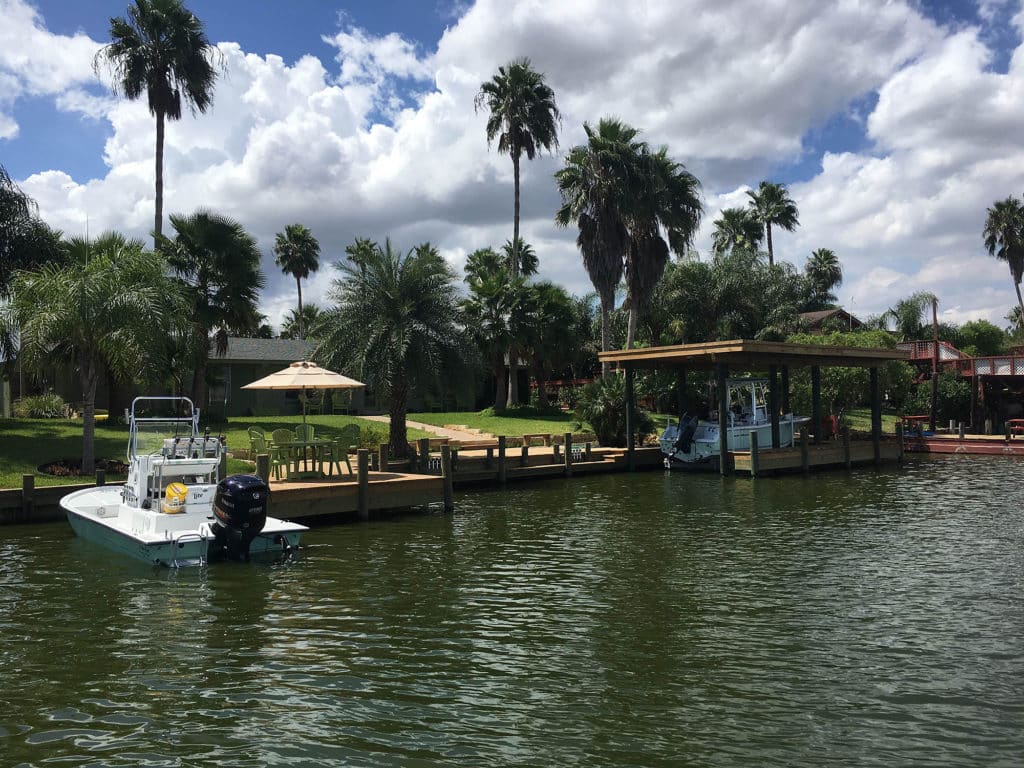
Gonzales bunked us at a single-story ranch-style house set on the Arroyo Colorado, a 90-mile green river running from Mission, Texas, to Laguna Madre. Agricultural fields drain into the waterway; during wetter periods, the runoff attracts a small population of common snook.
After our late-day arrival, a crew prepared a family-style meal, and we planned the next day’s offshore-fishing adventure out of South Padre Island.
Before daylight, we’d drive about 50 miles south to board a 68-foot Viking, owned and captained by Murray Meggison with mate Capt. Travis Flanagan. Offshore shrimpers would lead us to blackfin tuna and kingfish, and we’d check a few shallow drops in Texas waters, within 9 miles of shore, for keeper red snapper.
Unlike those caught in federal waters, Texas red snapper remain in season year-round. The state enforces a four-fish daily bag and a minimum length of 15 inches.
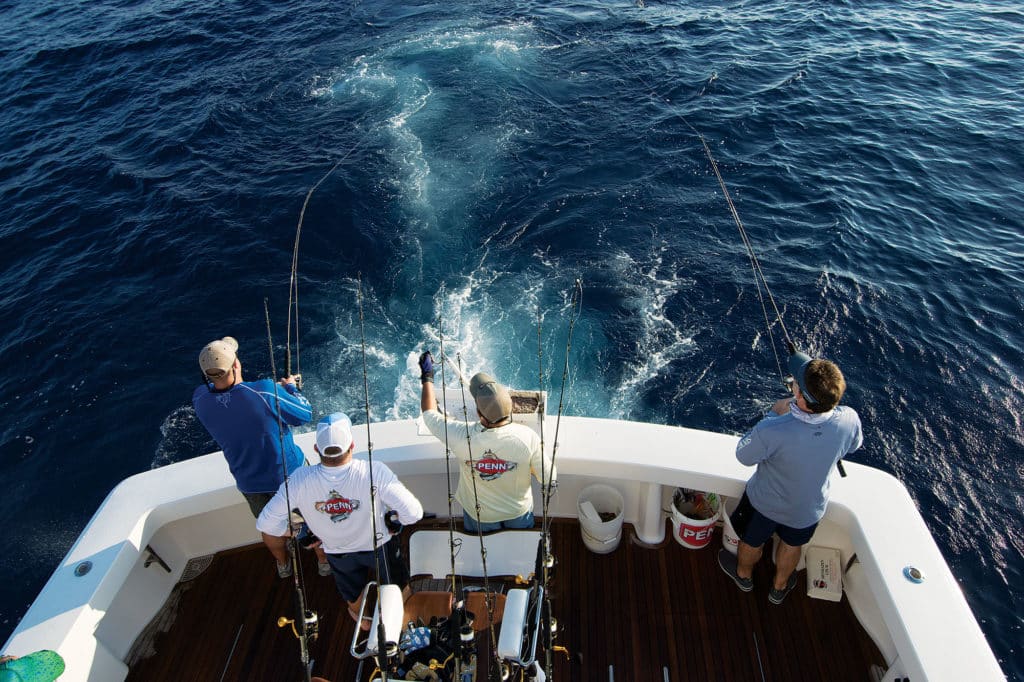
Trolling and Dropping
Flanagan had already rigged trolling leaders for the arsenal of Penn Carnage boat rods and Slammer III spinning reels (which range up to size 10500 for 80-pound braid) that Rice had brought. Rice had spooled 7500s with 65-pound SpiderWire. As Meggison motored into the Gulf to run the 40-plus miles offshore, Flanagan readied Sebile Stick Shadds and a red-and-white cedar plug. He thawed a block of squid for bottomfishing baits.
As the sun finally breached the horizon, Meggison slowed near two trawling shrimpers in about 130 feet of water. Flanagan set out three rods, as Meggison wove a pattern near the vessels.
A snake king slammed the starboard rod, and Woodward picked it up as the crew searched for signs of other takers. Rice held one rod’s tip near the water’s surface to force the plug deeper. Flanagan rhythmically jigged the cedar plug. At the transom, the king shook itself off the plug, avoiding the gaff and the camera.
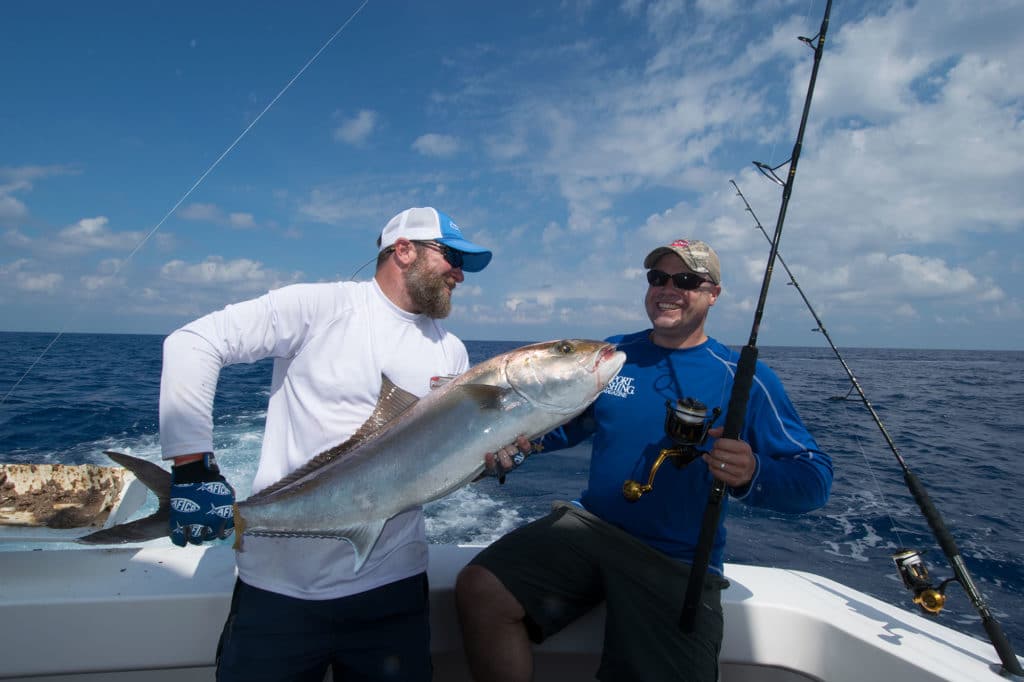
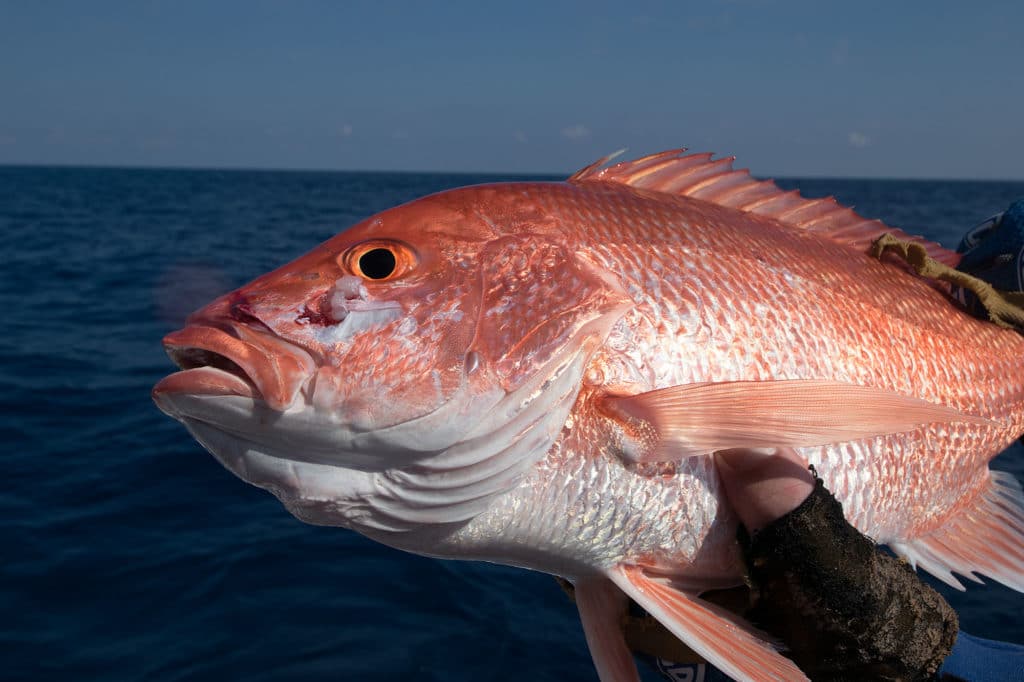
Meggison ran farther offshore, where he found and circled the Miss Verna shrimper as its crew started hauling nets. A bonito hit Rice’s plug and bottlenose dolphins swarmed the spread. Topwater fanatic Morel started heaving a Sebile popper in anticipation of a blackfin tuna surface strike.
After we beat the water for another 15 minutes, Meggison steered the Viking toward one of his bottomfishing waypoints, and Flanagan rigged up several Penn Rampage jigging sticks. Weighted with 14 ounces to 2 pounds of lead, we dropped three baits in 300 feet of water.
Quickly, Woodward landed first one and then a second red snapper. Since we were floating in federal waters, both fish were released. Rice horsed up a grill-worthy yellowedge grouper.
A few drifts later, Meggison pulled stakes and headed toward state waters. He trolled near a buoy, where we picked a dolphin, and we hauled up several amberjack from the shallower structure before heading toward shore.
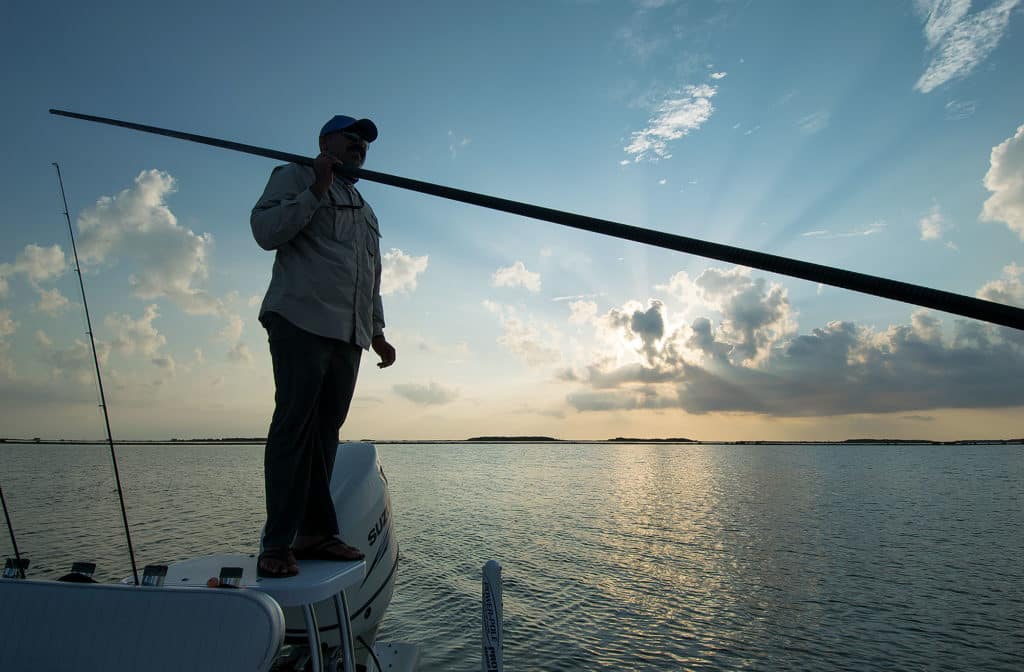
Skinny Water
Texas had scheduled its special white-winged dove season for Saturday and Sunday afternoon (noon to sunset) the first two weekends of September — perfect for a morning cast and an afternoon blast.
At daybreak Saturday, Capt. Jaime Lopez motored up to the dock behind our lodge in his skinny-water Texas sled boat, an Ibis made by NewWater Boatworks. Rice, Woodward and I boarded the low-gunwale 21-foot skiff, and Lopez ran the Arroyo Colorado 6 miles to its mouth at the Laguna Madre.
This lower portion of the river is bounded by the Laguna Atascosa National Wildlife Refuge, host to mammals such as nilgai, ocelots and jaguarondi, and birds such as chachalacas, hawks and falcons.
The tide was high, though that’s a bit relative. The water rises and falls only about 18 inches once a day in this region. But in a bay that averages 3.6 feet of depth, that can make a big difference, particularly with any kind of wind pushing the water.
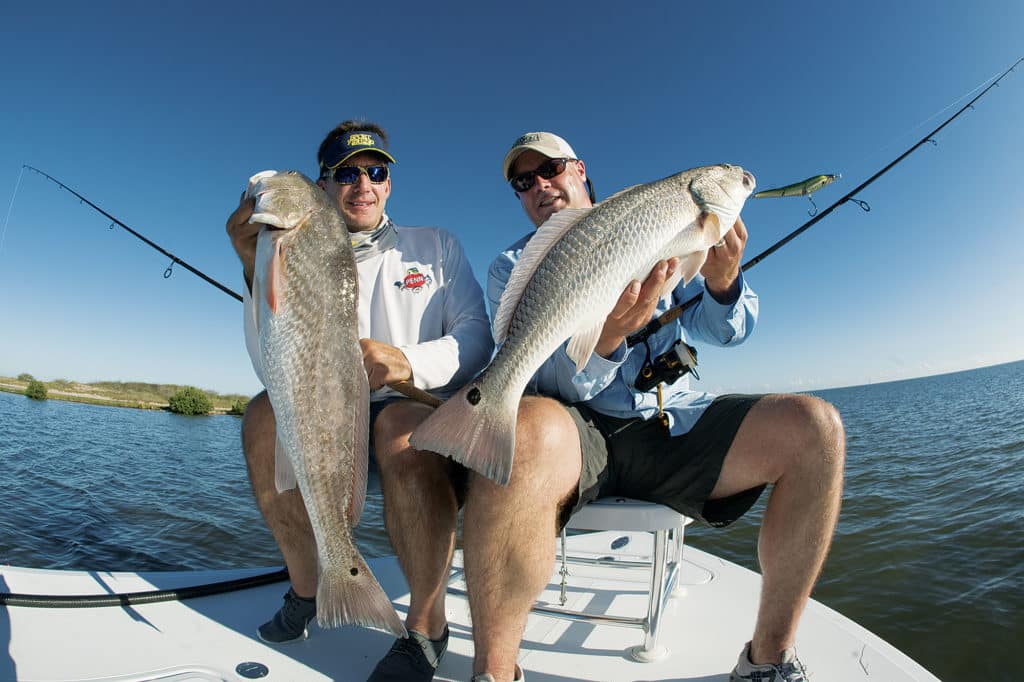
A moderate east wind stacked bay water higher along our mainland shoreline, giving us about a foot of depth over the sand and grass of Peyton’s Bay. We each grabbed a Penn Battalion rod paired with a Slammer III 3500, spooled with 15-pound SpiderWire Stealth, and tied on a variety of baits — a red-and-white soft-plastic jerkbait, a transparent Zara Spook and a chartreuse Sebile Stick Shadd.
I walked the Spook along the bay’s surface, noting the easy action of the rod. A swirl on the lure made my heart race, but the red failed at its attempt. Woodward hooked the first fish — a black drum — on the jerkbait.
Lopez spun us up over sand and skated across the flats toward a windward grass shoreline. He poled us along the bank, which had started silting. A redfish crashed my topwater as soon as it hit the surface. Rice hooked a second red on a suspending Stick Shadd, and Woodward quickly reached for the tackle box.
While Texas allows saltwater anglers to keep three red drum daily within a 20- to 28-inch slot, we released all of our reds and a few small trout. By midday, we headed back for lunch and the afternoon dove session.
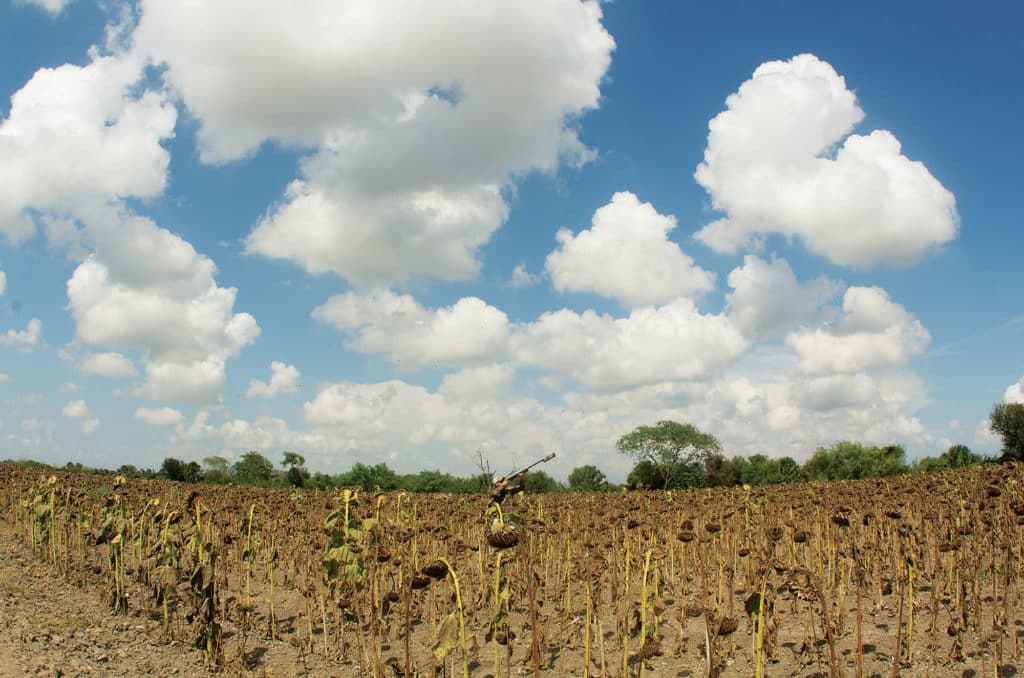
Flight Path
Arriving at the dove-thick sunflower field, 40 miles south of our lodge, we parked the trucks beneath a stand of acacia and Jerusalem thorn trees. The midday sun toasted the dry ground and the wilted crop. Benelli’s Rhea and SilencerCo’s Jones set up a rack of shotguns for us to try, with and without suppressors, which greatly muffle the sound of the discharge.
The suppressors take a little getting used to because they weigh down the barrel a bit, but the reduction in sound can be ear-saving. Silencers are legal to use and own in most of the United States; they’re permitted in 42 of the 50 states.
I had brought my own 20-gauge Benelli Montefeltro but soon fell in love with a brand-new 28-gauge Ethos. Gonzales provided No. 7½ and No. 8 shells, and we brought improved, improved-modified and modified chokes to try.
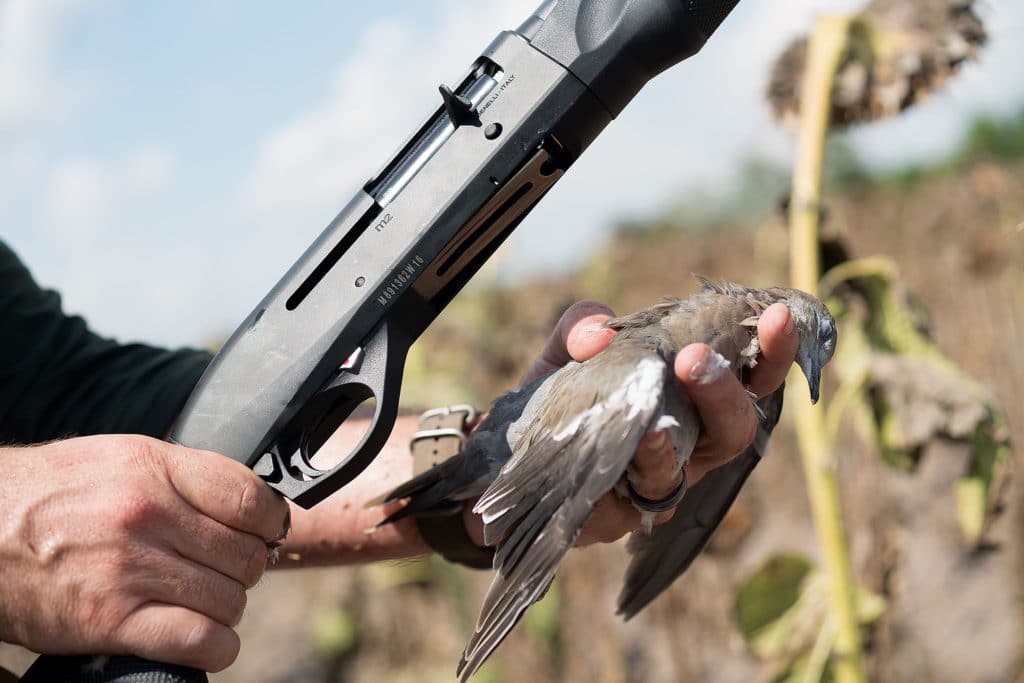
The five of us spread out in and along the field, finding shade and standing or kneeling near cover. We didn’t have to wait long before the first white-winged doves buzzed us like practiced squadrons. Mixed in, we found a few mourning doves and plentiful Eurasian collared doves, a larger exotic species with no season or bag limit.
We could take 15 doves a day within the special white-winged dove season, but no more than two could be mourning doves or white-tip doves.
The white-winged birds look unusually dark when flying compared with the other species, so they were fairly easy to distinguish. They came from multiple directions, though mostly from behind us, heading toward the Rio Grande, a stone’s throw away.
Regular flights kept us constantly scanning the skies. Some flocks flew high, out of range, even for the 12-gauge shotguns we had on hand to try. But plenty of birds offered passing shots, overhead shots and even approach shots.
Regardless of species, doves can fly erratically. Finding the proper lead and swinging through the shot takes practice and muscle memory. Fortunately, when the birds are thick, you can quickly recall the right rhythm. Without a retriever present, we picked up our own birds and tucked them into our hunting vests, pushing through the prickly sunflower plants, which stood about 4 feet high. We took frequent breaks to drink Gatorade or water, and to drop off birds to maintain an accurate bag count. The sun was still high by the time we had shot our limit.
Gonzales fired up a portable grill, and we sampled some nilgai sausage with ice-cold beer before heading back to the lodge.
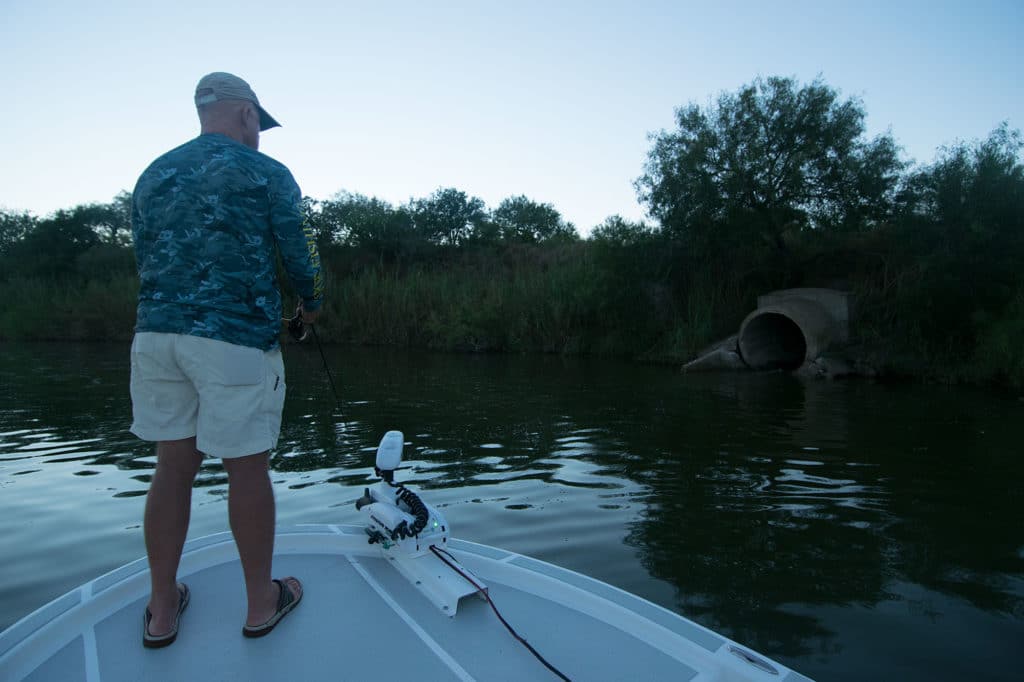
Snook Search
On day three, we awoke before dawn to head upriver with Gonzales in his 21-foot Shallow Sport on the Arroyo Colorado. Gonzales showed us the oversize drainage pipes that usually bring fresh agricultural runoff to the river, and thereby snook in the 24- to 28-inch range — and sometimes juvenile tarpon. Despite September supposedly falling within the rainy season, these drains remained dry.
We cast our suspending twitchbaits toward the pipe mouths, to the structure beneath the Rio Hondo gate-lift bridge, into shadow lines, and inside the river bends where the water deepens. We found small menhaden upriver, but no snook.
Without much moving water or signs of fish, we headed back to the lodge for lunch and a trip to the dove fields. On this second afternoon, the birds had already become wary of open areas, flying higher and using more-evasive tactics. But the sheer number of white-wings — this time mixed with even more mourning doves — kept us busy.
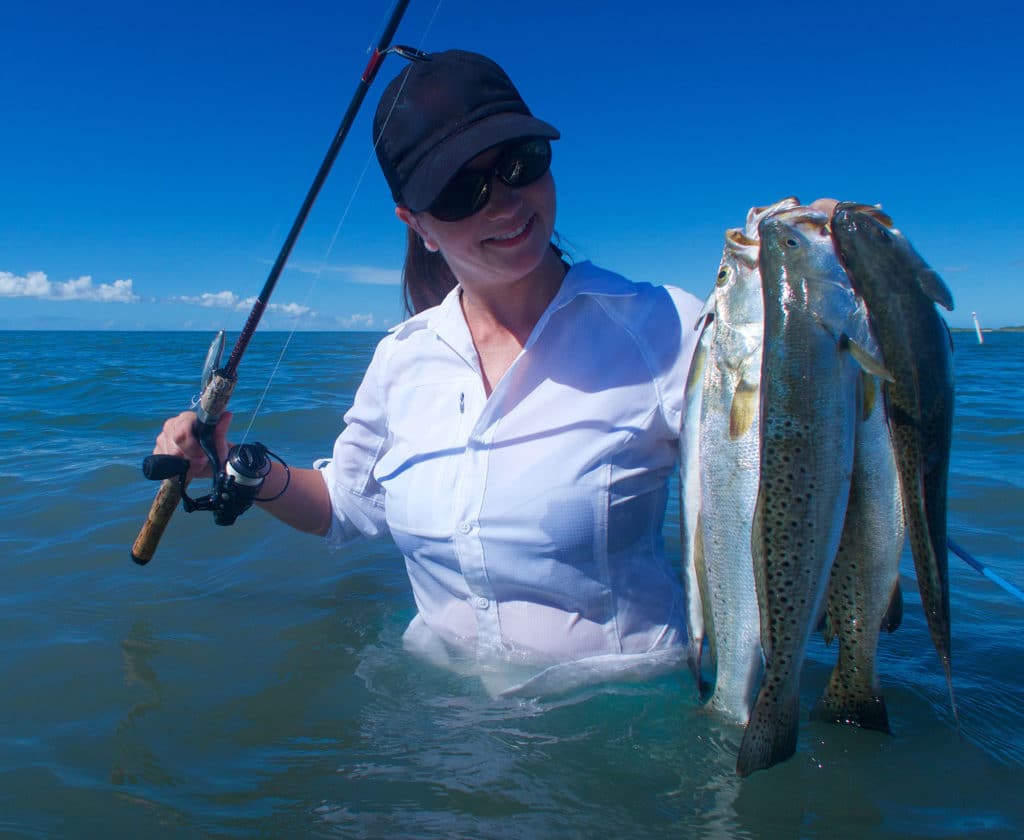
On our final morning, Woodward, Jones and I joined Capt. Daniel Juarez to prospect the bay for gator trout in potholes and along a channel edge. Texas anglers like to wade so they can thoroughly work an area, so Jones jumped out of the boat in his boots and wading belt, while the rest of us drifted the region aboard Juarez’s skiff.
We cast various jerkbaits, let them sink to the bottom, and then bounced them back. We picked up numerous small trout, but the big fish eluded us. September is a transitional month, where redfish stage up to move to deeper water, and trout fishing can be hot or cold.
The region’s best trout fishing occurs in spring, when the fish spawn and anglers use artificials as well as live croakers to best the gators. In the Lower Laguna Madre, anglers can keep five fish per day with a 15-inch minimum length, and no more than one fish measuring more than 25 inches.
Later that day as we departed south Texas, we felt a bit weary, yet we knew we had just made several fast friends and truly experienced a unique destination. After all, any day hunting and fishing is better than … well … any day.
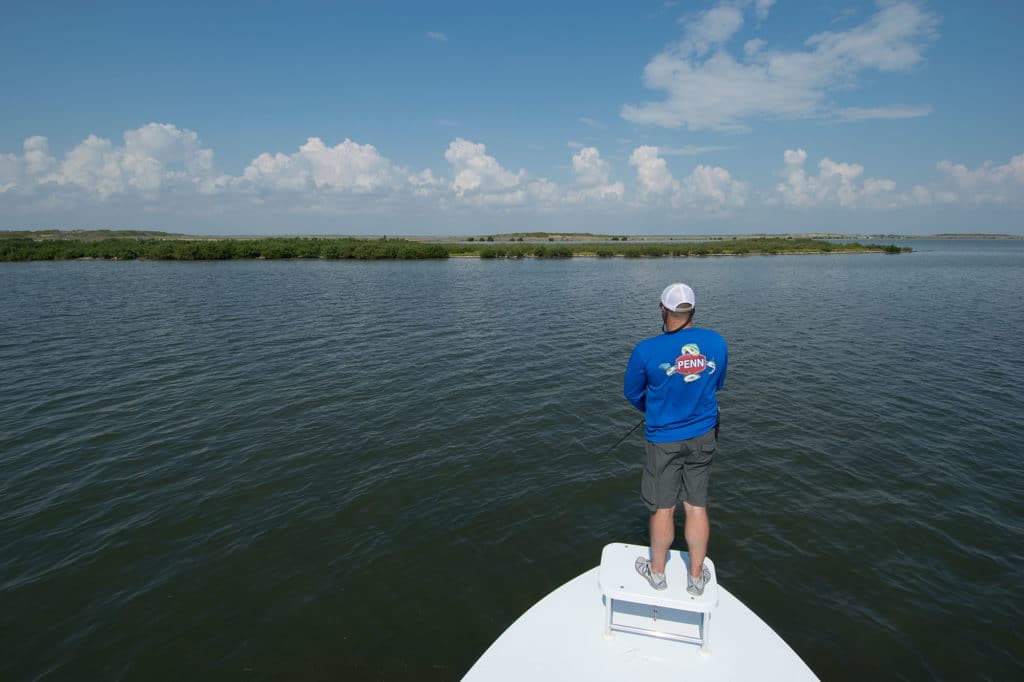
Harlingen Bound
Our south Texas host LeeRoy Gonzales describes his LG Outfitters business (lgoutfitters.com, 956-559-6334) in a way that reminded me of a dating service: He puts the right people together for the right experiences. Besides dove hunting, Gonzales can arrange a wide assortment of hunts in the region; he works with a number of fishing guides and vessels for offshore- and inshore-fishing experiences.
Prices vary greatly because each aspect of the trip is customized, but inshore fishing costs $750 per day and nearshore starts at $900. Dove hunting costs $200 per day per hunter for premium fields. Lodging costs $150 to $300, but clients can also opt to book their own hotel or condo in South Padre or Arroyo City.
On our trip, we flew into Harlingen, where LG’s Samuel Juarez picked us up and drove us to the nearby Bass Pro Shops. We purchased our hunting and fishing licenses: An annual nonresident saltwater-fish package proved to be the least-expensive option at $63. The state sells one-day, all-water nonresident licenses for $16 a day, but since we planned to fish portions of four days, the annual came in at $1 cheaper.
We also purchased five-day nonresident special hunt licenses ($48 per person) and a migratory bird endorsement ($7 per person), and registered for the free HIP certification. Total per hunter: $118.
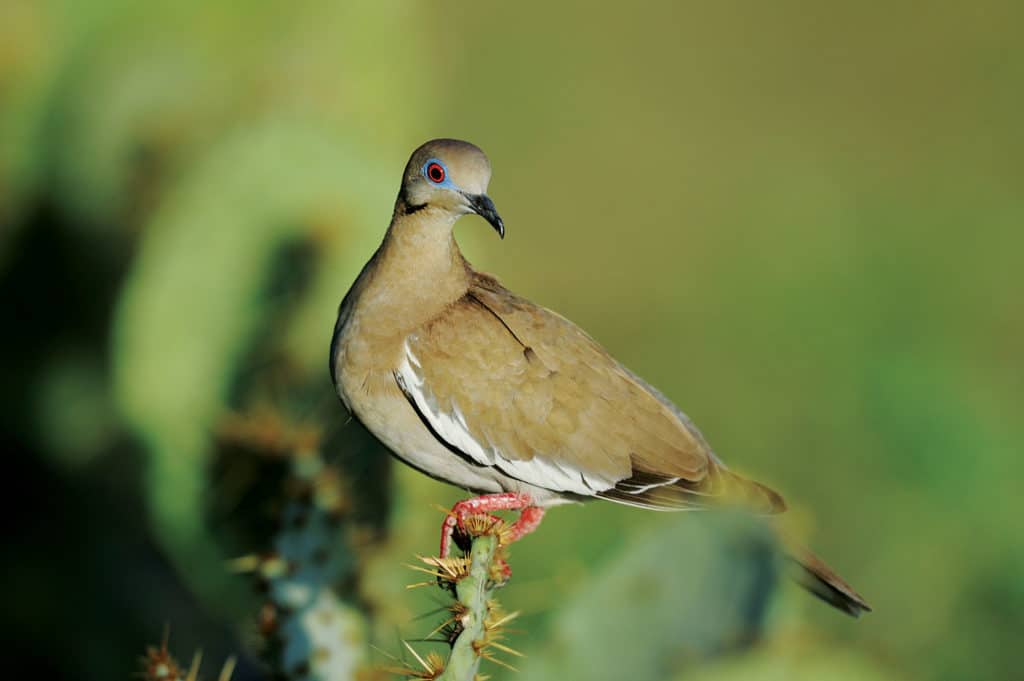
Texas Doves
Texas plays home to at least eight dove subspecies, including the white-winged (pictured above), white-tipped, mourning, rock, Eurasian collared, Inca, band-tailed pigeon and common ground dove, according to the Texas Parks & Wildlife Department. All but the last three species can be hunted, and they continue to migrate through the state in ever-growing numbers.
TPWD says about 35 million mourning doves (which account for 10 percent of the country’s 350 million) and 9 million white-winged doves make their way across Texas each winter. Those numbers and Texas hunters’ feverish penchant for dove hunting resulted in the longest overall dove season in 80 years for 2016, at 90 days (20 days longer than previous years). The state is separated into zones with differing start and end dates, but the season generally ran from September through a portion of November and mid-December through late January.
White-winged doves (Zenaida asiatica) feature white crescents along their wings, orange eyes rimmed in blue, and a square tail. They spend summer breeding periods in parts of mostly southern Texas, New Mexico, Arizona and California, according to the Cornell Lab of Ornithology. They spend winters in central Mexico and even along the Gulf Coast region.

